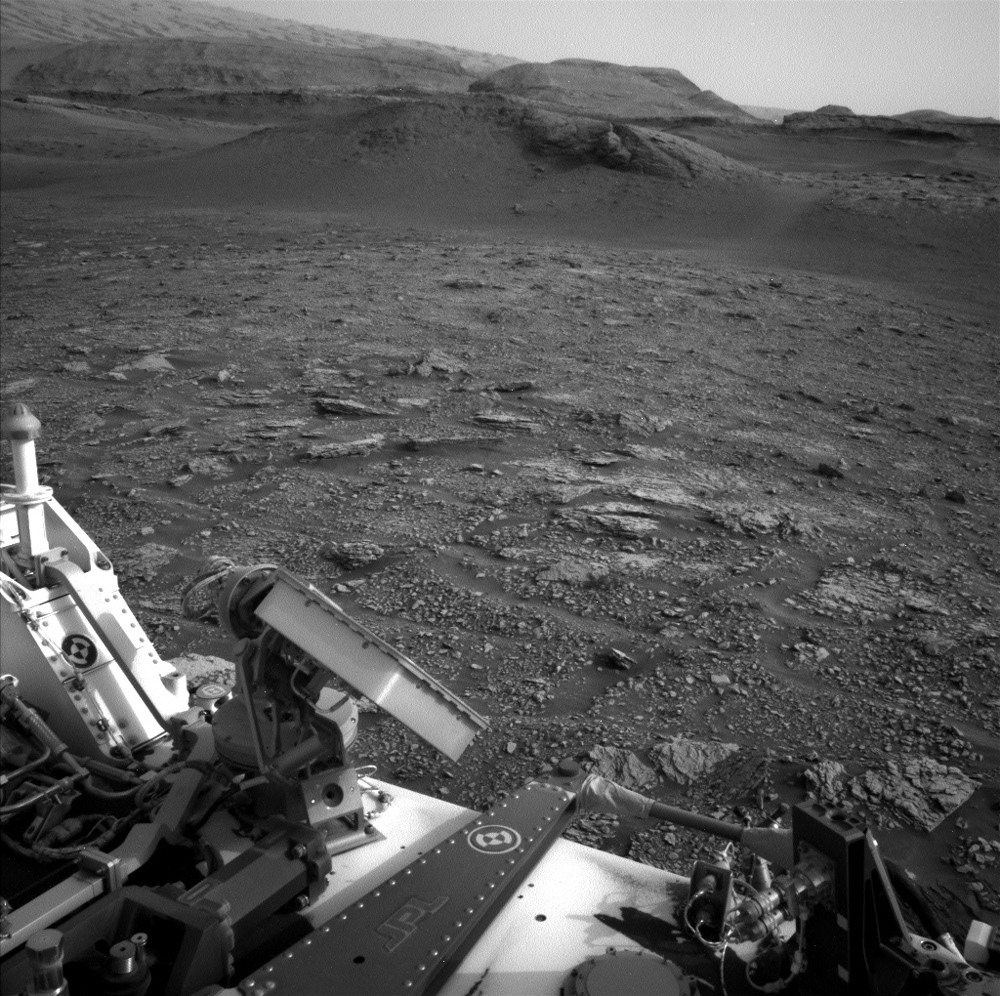2 min read

Today we planned a short and sweet single-sol plan, carrying on with our drill campaign at the “Mary Anning” site. The meat of today’s plan focuses on dropping off our powdered drill sample to our onboard CheMin instrument, which will tell us all about the mineralogical composition of our latest drill hole.
In addition to dropping off to CheMin, we planned about an hour’s worth of remote science activities in today’s plan to help document our surroundings. To kick off the science block, Mastcam will take a meaty 53-frame stereo mosaic pointed at the fractured intermediate unit to the southeast. This mosaic will document a large portion of our surroundings and will also help the science team plan our drive path once we finish up our drilling activities at Mary Anning. Next, ChemCam will shoot its laser at the target “Bishop’s Palace,” which exposes some nice small-scale layering and possible diagenetic features. ChemCam will also use its Remote Micro Imager (RMI) to take a long-distance mosaic of the “Maybole” target. Maybole is shown in the Navcam image above as a partially exposed, layered outcrop at the top of a nearby hill. In fact, we purposely planned for a few frames to overlap between the long-distance RMI and Mastcam mosaics so that the lighting conditions between the two mosaics match up. This overlap will allow for nice comparisons between the two mosaics to be made. Towards the end of the science block, Mastcam will take a documentation image of the ChemCam target Bishop’s Palace. We also planned several atmospheric monitoring activities with Navcam. Later in the sol, we’ll take a MARDI image to continue with our change detection campaign at our current location.
Written by Rachel Kronyak, Planetary Geologist at NASA's Jet Propulsion Laboratory







